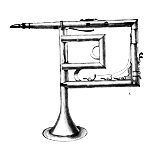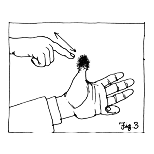The More You Know The Less You Think You Know
February 2024
Film
Funeral Parade of Roses (1969, Toshio Matsumoto)
Elektro Moskva (2013, Dominik Spritzendorfer, Elena Tikhonova)
The Final Terror (1983, Andrew Davis)
The Center Will Not Hold (2017, Griffin Dunne)
Repo Man (1984, Alex Cox)
Music
Arone Dyer x Stargaze (Transgressive Records)
Editrix II: Editrix Goes To Hell (EIS)
The Golden Gate Quartet (Columbia/FeelingSwing)
Leenalchi: Sugungga (Zanpar)
Rozalie Hirs: Platonic ID (Attacca)
Books
The Year of Magical Thinking by Joan Didion (2005)
The Drug & Other Stories by Aleister Crowley (2010)
Song of Solomon by Toni Morrison (1977)
Unstrung by Marc Ribot (2021)
Thinking In Pictures by Temple Grandin (1995)
DEAD BASS GOON
WARNING! Bass Players only! If you are not a total bass geek please exit this site immediately. Below you will see two written examples (traditional notation and tablature) of the most famous Bungle bass-line ever. This bass-line was written by drummer Danny Heifetz (no bassist in their right mind would dream it up ). You will notice that it is basically two chromatic scales starting an octave apart (C#) and collapsing (one ascending, one descending) to a unison (F#).
If you play this line on piano with one finger from each hand you will realize what a ridiculous concoction it is. On bass, however, it's not so easy. It took me a long time to figure out how to play it, and a very short time to forget it. I had to re-learn it in order to teach it to a student, and now, at the behest of many bass-dweebs, I am disclosing the secret of the dead bass goon:
In manuscript form, I have divided the line into four positions. By "position" I mean a four-fret span, one finger per fret (1-2-3-4). Technically, the line can be played in three positions. The five notes in position VI can be played with the other two notes in position V. But I never played it this way. I found that at such a fast tempo, it was easier to play if my hand was constantly climbing upward.
This also makes more sense when you realize that position V, VI and VIII all begin on the A string. Above each note I've written a fingering. And the roman numerals represent what fret the position begins at. So, for example, in the last measure your first finger should be at the 8th fret even though the figure starts with your 2nd finger.
Good luck, and let us never speak of this bass-line again.












